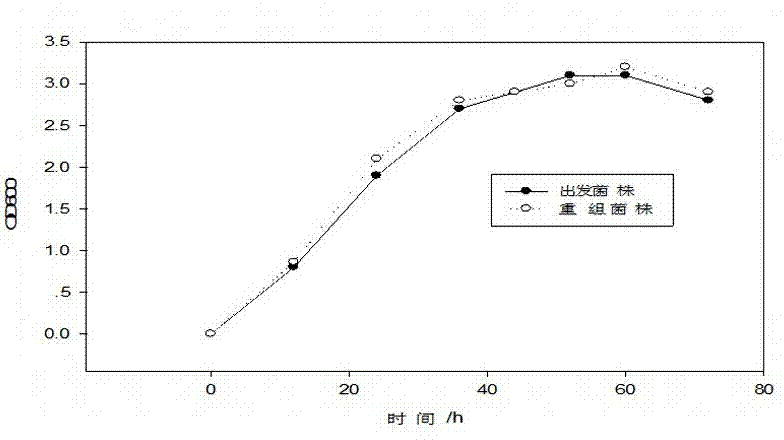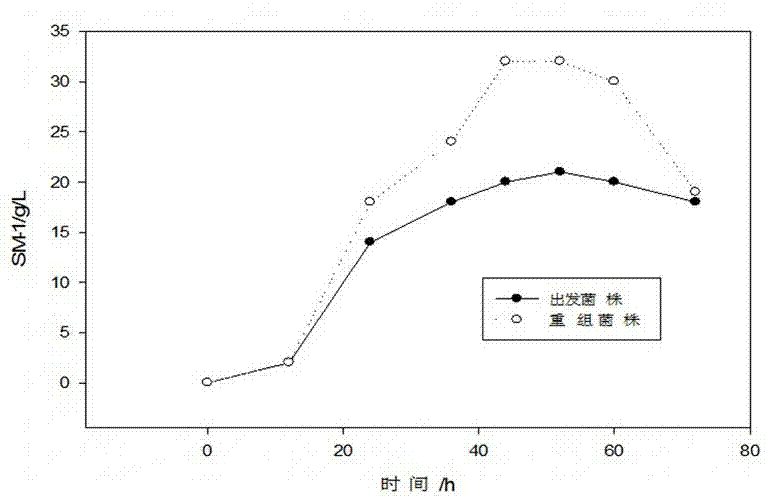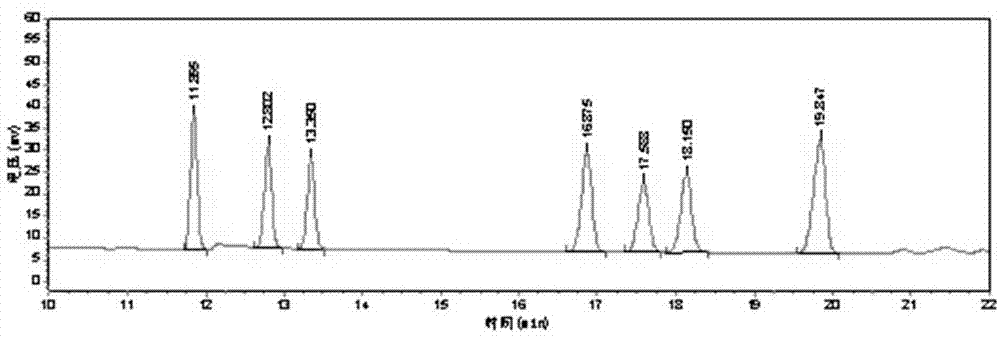High-specific heat capacity microbe biological polysaccharide SM-1 and its preparation method and use
A technology with high specific heat capacity and biological polysaccharides, applied in the direction of microorganism-based methods, biochemical equipment and methods, microorganisms, etc., to achieve the effect of slowing down the loss of body temperature and delaying the rise
- Summary
- Abstract
- Description
- Claims
- Application Information
AI Technical Summary
Problems solved by technology
Method used
Image
Examples
Embodiment 1
[0024] The production microorganism selected in this embodiment is Bacillus subtilis. The source of Bacillus subtilis in this example is as follows: samples are collected from different plant surfaces (for example, yellow sunflower, aloe, etc.), and a medium with low nitrogen content (the medium is composed of components of the following quality: sucrose 10g, NaCl 0.2g, K 2 HPO 4 0.2g, GaCO 3 5g, MgSO 4 0.2g, (NH 4 ) 2 SO 4 0.1g, PH=7.0), the viscous and transparent strains are preserved for re-screening; re-screening is performed on the medium with lower nitrogen content above, and finally high-yielding polysaccharide strains are obtained. 16srDNA was identified as Bacillus subtilis, (see the DNA sequence list for 16srDNA sequence) as the starting strain. Further for the starting strain in the specific glycosyltransferase gene ( GumM versus GumH with GumK ) And GDP-mannose dehydrogenase gene algD After site-directed mutation and enhanced expression, a recombinant produ...
Embodiment 2
[0030] The monosaccharide composition of the high specific heat capacity microbial biopolysaccharide SM-1 obtained in Example 1 was determined.
[0031] The monosaccharide composition of the high specific heat capacity microbial biopolysaccharide SM-1 obtained in Example 1 was determined by gas chromatography. The results are shown in Figure 2(ab). Scan the reference sample: the monosaccharide components are in order of peak time: rhamnose, Galactose, xylose, mannose, glucose, arabinose, inositol (internal standard 1.75mg), the sample is mainly composed of 3 kinds of monosaccharides, compared with the peak time of the standard, it can be seen that these 3 peaks correspond to each other It is mannose, glucose and galactose. Calculating the area ratio of each peak in the sample by the method of integration shows that the molar ratio of mannose, glucose, and galactose is about 2:1.5:1.
Embodiment 3
[0033] The molecular weight of the high specific heat capacity microbial biopolysaccharide obtained in Example 1 was determined.
[0034] The molecular weight of BMPS was determined by high performance gel filtration chromatography (HPGFC), from image 3 The peak time in BMPS can be seen as a single peak, indicating that the purity of the polysaccharide solution is relatively high. After being determined by gel chromatography, the average molecular weight of BMPS is about 25,000 Da.
PUM
| Property | Measurement | Unit |
|---|---|---|
| molecular weight | aaaaa | aaaaa |
Abstract
Description
Claims
Application Information
 Login to View More
Login to View More - R&D
- Intellectual Property
- Life Sciences
- Materials
- Tech Scout
- Unparalleled Data Quality
- Higher Quality Content
- 60% Fewer Hallucinations
Browse by: Latest US Patents, China's latest patents, Technical Efficacy Thesaurus, Application Domain, Technology Topic, Popular Technical Reports.
© 2025 PatSnap. All rights reserved.Legal|Privacy policy|Modern Slavery Act Transparency Statement|Sitemap|About US| Contact US: help@patsnap.com



